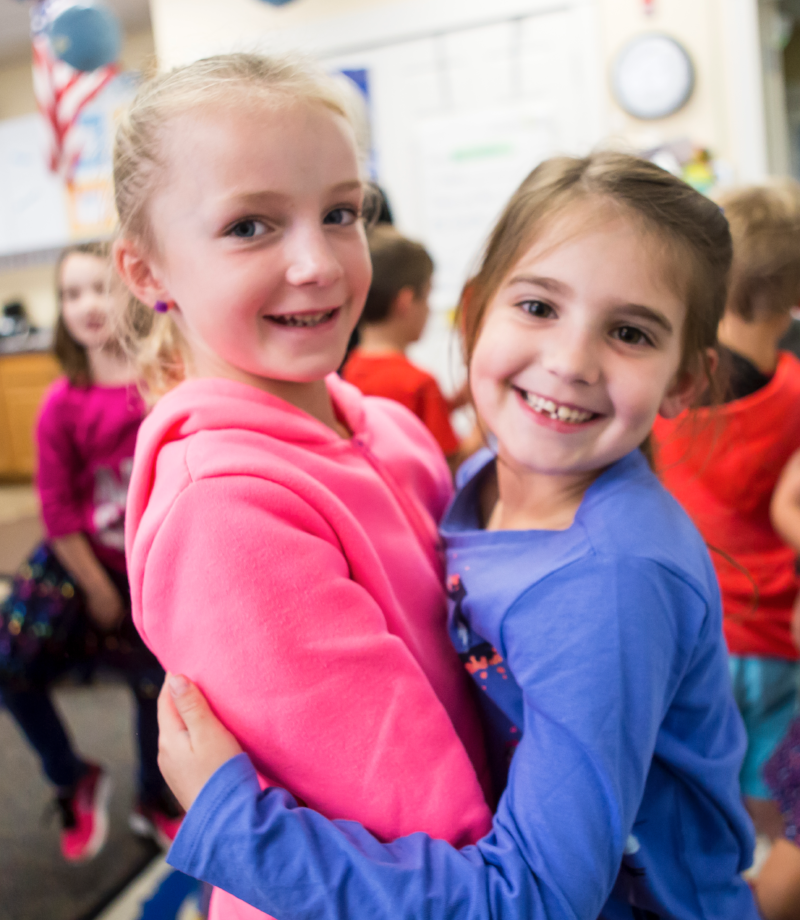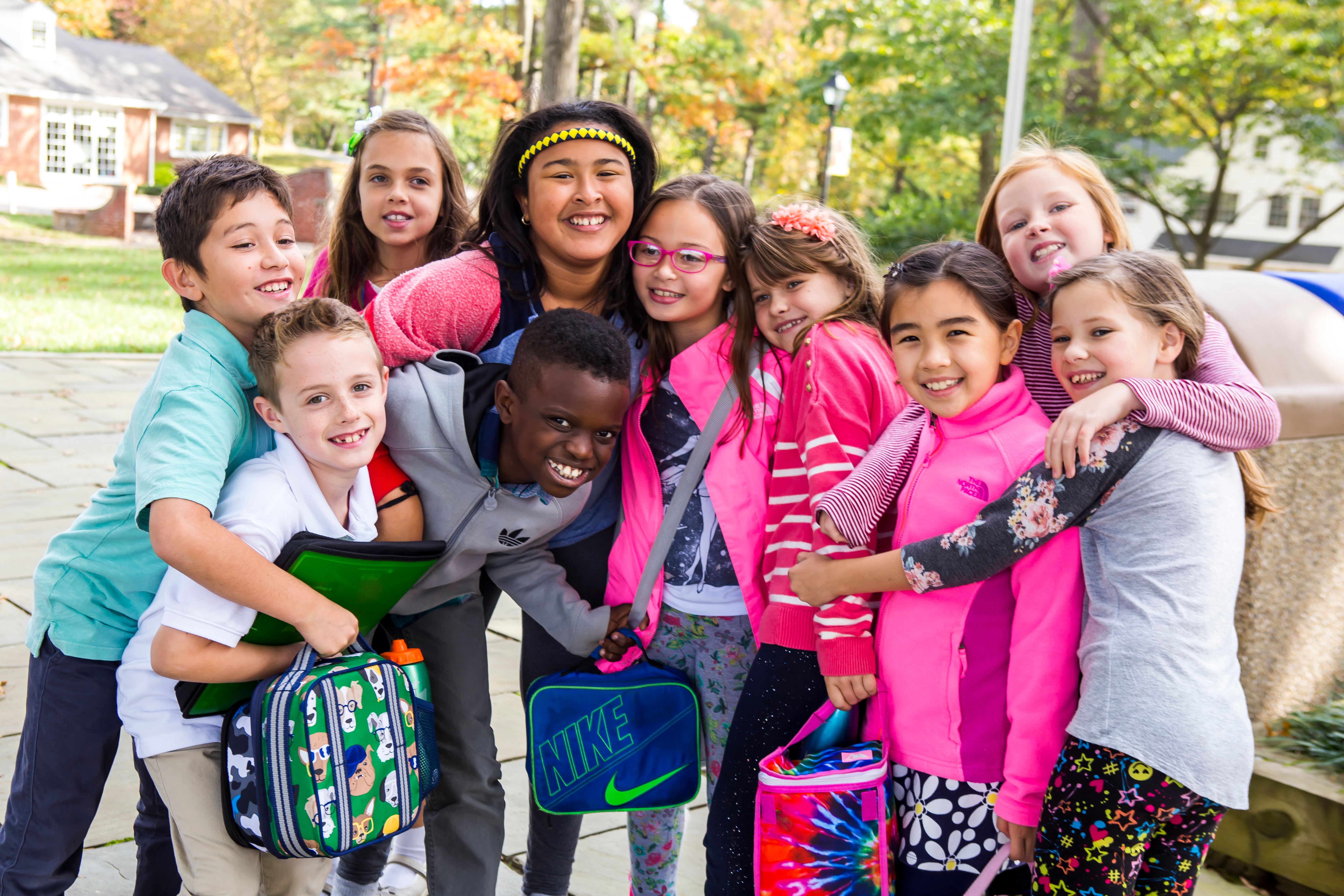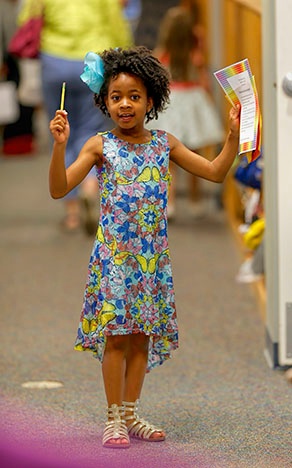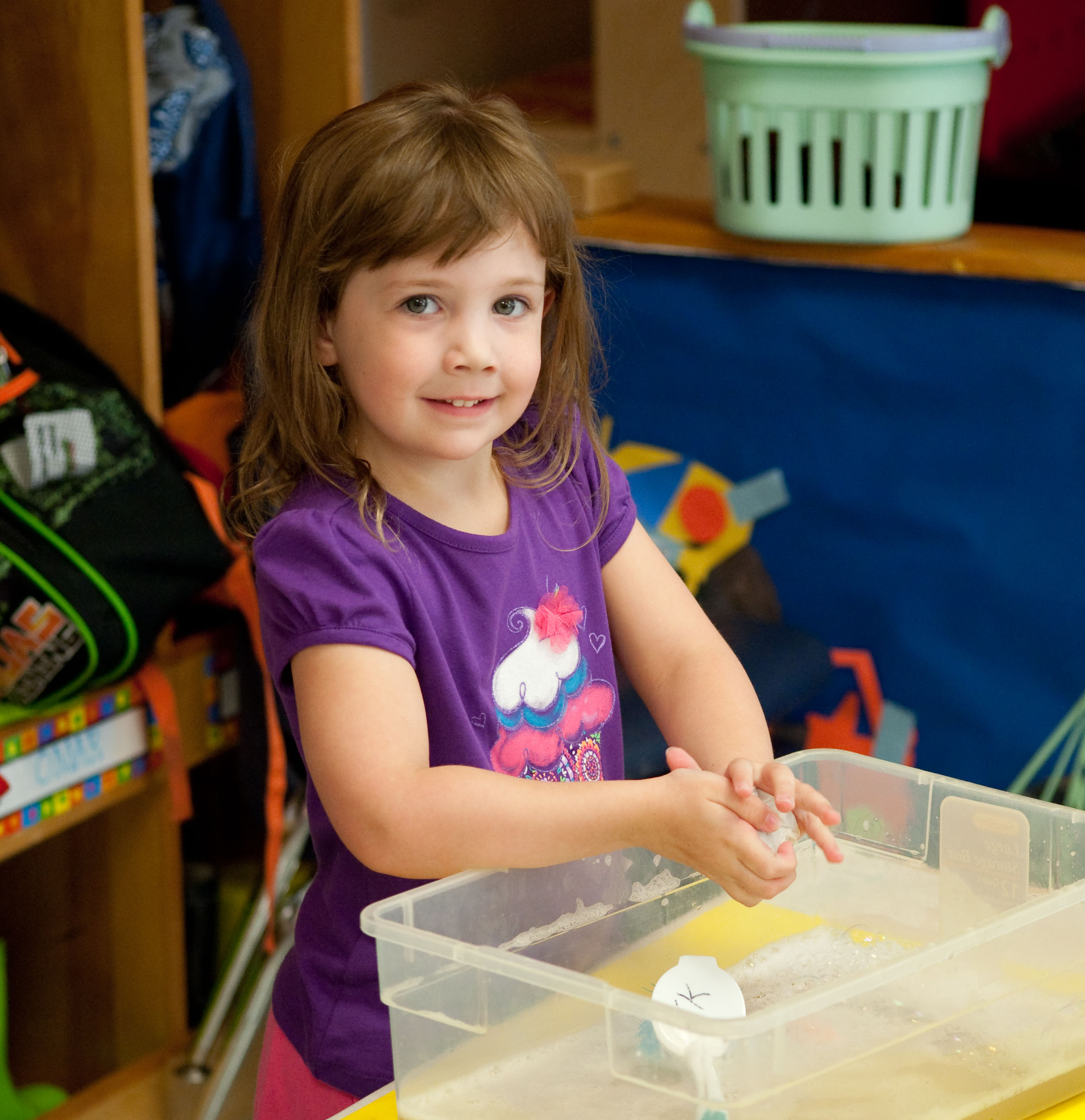The transition from kindergarten to first grade can make parents and students feel excited and a little nervous about leaving “early childhood” and becoming a “big kid.” At Sanford School, teachers think about helping students do three things to ensure that students all transition smoothly: seeing a familiar face, feeling comfortable in the space, and getting used to the pace.
Seeing a Familiar Face
Students often feel less anxious about going to a new classroom when they know a little bit about the new teacher that they’ll have. To help with this, kindergartners have recess along with the first and second grades so that teachers can start to connect with the students they’ll have in a year or two. In addition, faculty members who teach “specials” like art, music, and technology constantly remind students that even though the homeroom teachers change, the specials teachers will remain the same, so they can plan to see many familiar faces the following year. To help drive home this point, the specials teachers always participate in greeting during morning drop off the first week of school so that students going into a new grade can see teachers that they had the previous year













